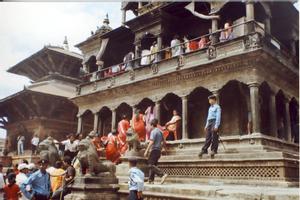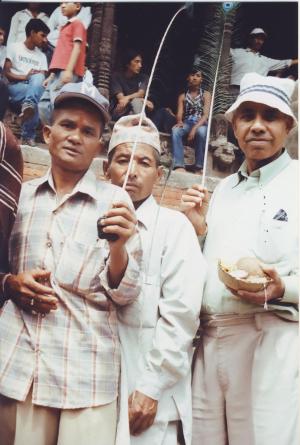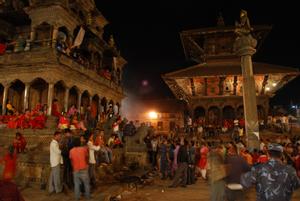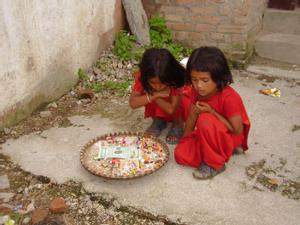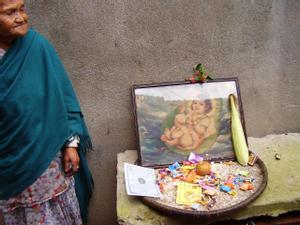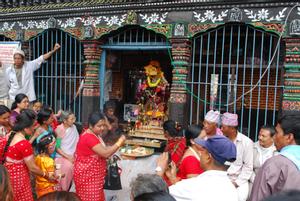Kriṣṇa Jayantī
Kriṣṇa Jayantī is the festival celebrating the birth of Kriṣṇa. It takes place in late August/early September and begins on the 7th day after the full moon of the month of Śrāvaṇa. The next day, Kriṣṇa is worshipped with a procession through the city, Kriṣṇa Jātrā. The festival is also known as Kriṣṇajanmāṣṭamī.
The center of the festival is the large stone temple Kriṣṇa Mandir at Durbar Square in Patan. On this day, women, as well as men and children, go to the great Kriṣṇa temple to bring their offerings (Kriṣṇa-pūjā) and receive divine blessings for their family. Women and men stand in line divided into two queues. The women stand to the left of the main entrance and the men to the right. In the past, the King of Nepal also used to attend the Kriṣṇa festival, but nowadays the President of the Republic comes for a visit.
Many women fast during the day and stay at the temple for hours. They dance, sing and sit on the lower platform of the temple. People keep coming to the temple until late in the evening. At midnight, the temple is closed, with some women staying to keep vigil during Kriṣṇa's birth. This practice is considered very meritorious.
The next day is the day of worship for all the local Kriṣṇas – through the Kriṣṇa Jātrā. The procession in Patan begins at the Gaṇeśa shrine in the Sundhārā ward early in the morning with a purification ritual performed by two Rājopādhyaya brahmins. Another ritual for obtaining Kriṣṇa’s blessing takes place at the central Kriṣṇa Mandir, after which the procession through the city begins. On the official list describing the route, there are 217 temples, shrines and places associated with Kriṣṇa (such as the city's "Kriṣṇa" dairy, which is also a sponsor of the festival). But private homes are also visited, where people provide access to their own icons of Kriṣṇa - in various forms - to the public on this day. The festival is supported by private companies (e.g., a bank) and many volunteers.
In the evening, the priest and his helpers return to the Kriṣṇa temple in Sundhārā, and a ritual concludes the procession. After all participants (there were more than three thousand in 2008) have received a ṭikā and prasād, the festival ends at about 10 p.m.
Lydia Stefanova-Wurmbrand
